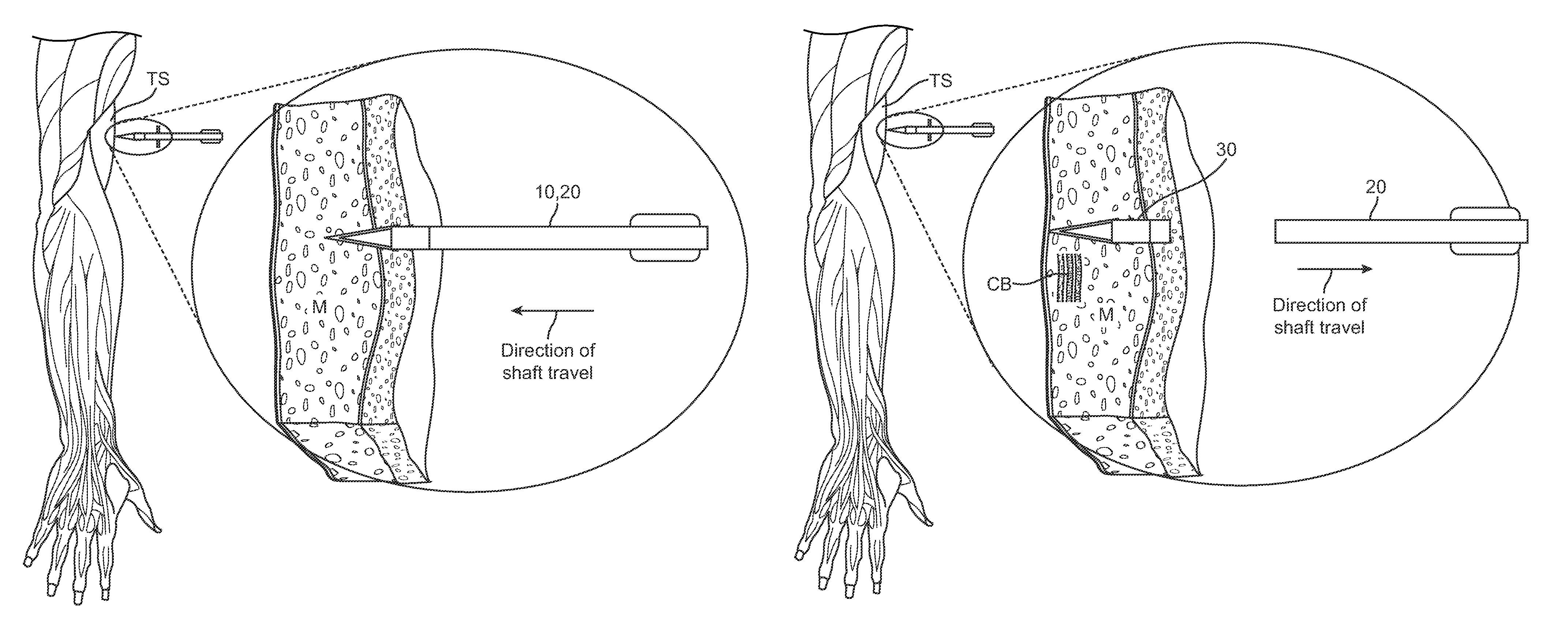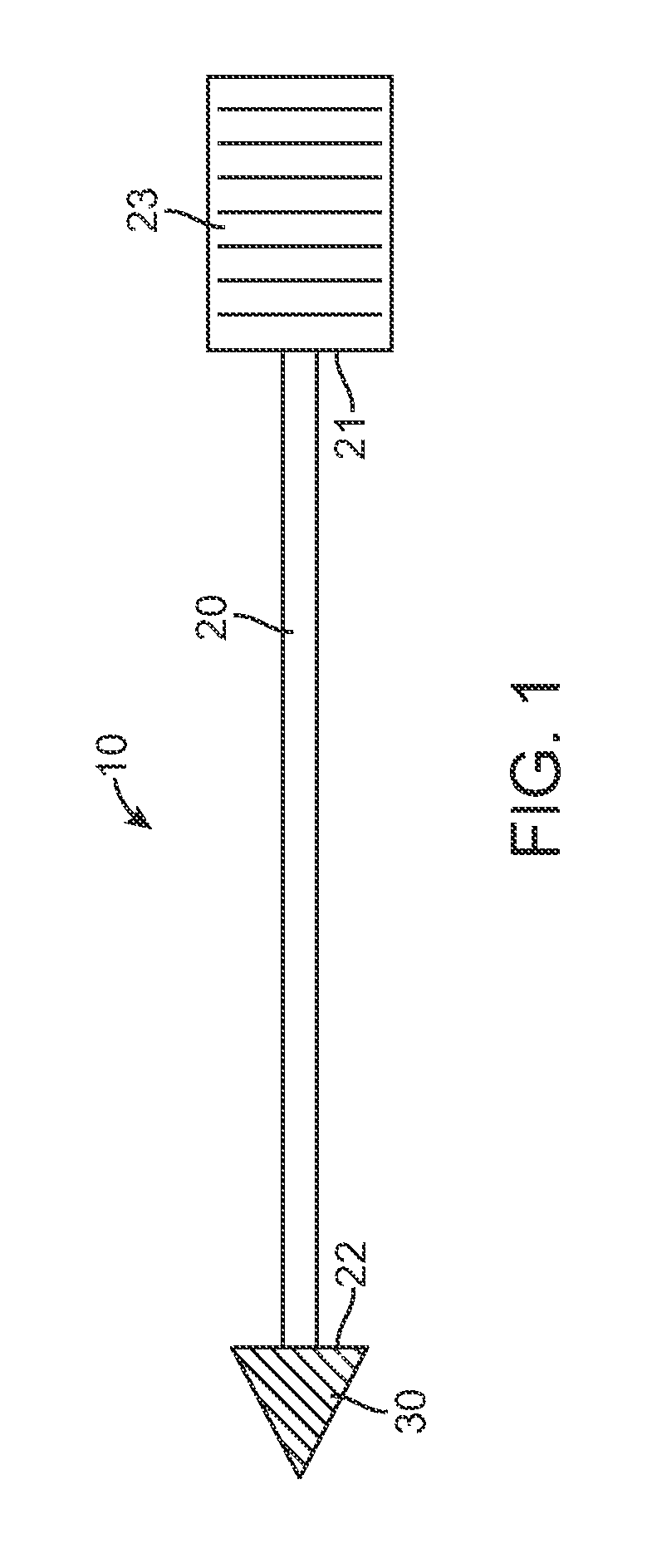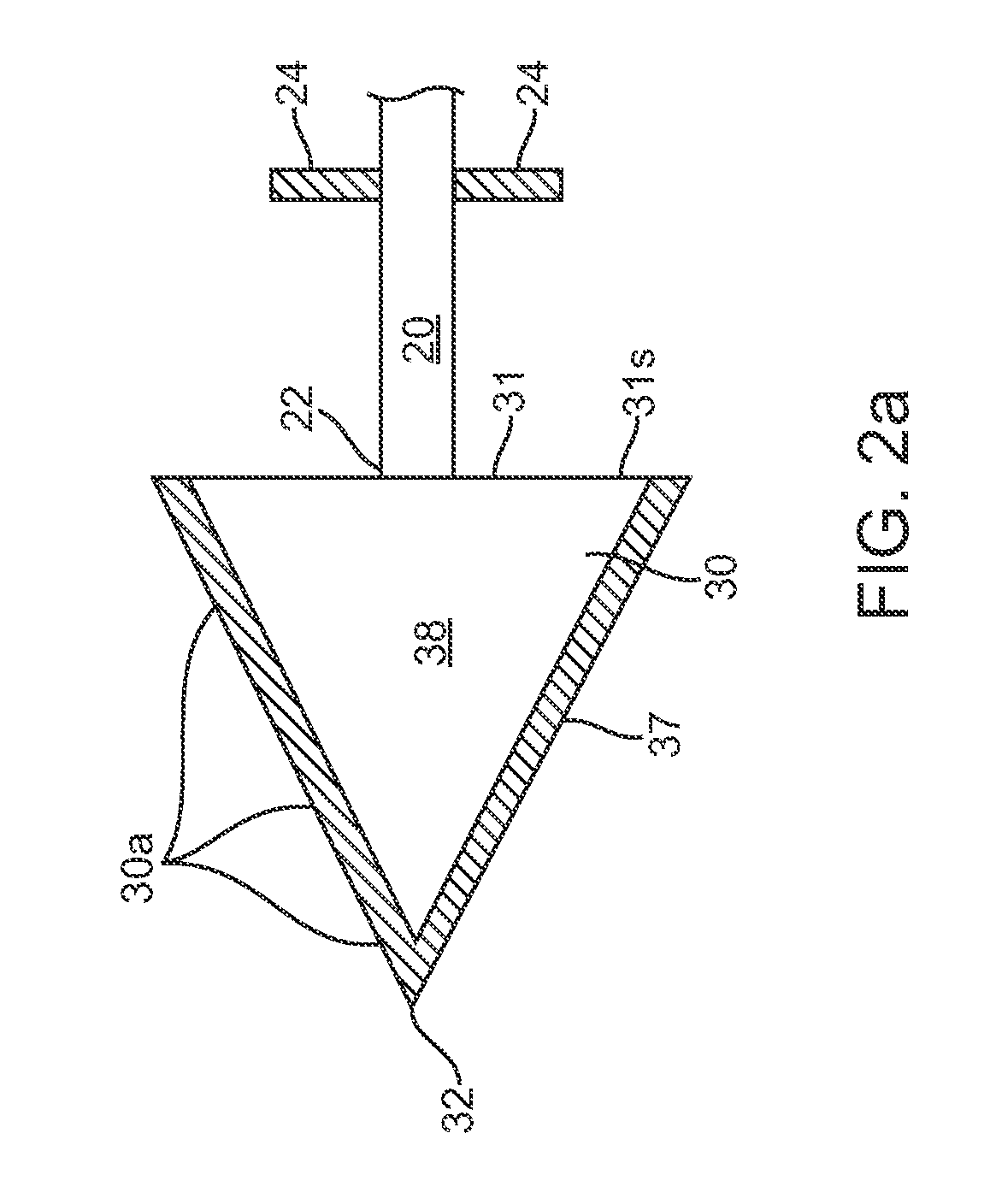Skin penetrating device and method for subcutaneous solid drug delivery
a skin penetrating device and drug technology, applied in the field of subcutaneous drug delivery, can solve the problems of oral and intravenous drug delivery with a number of limitations, oral delivery limitations include toxicity, poor absorption and varying concentrations,
- Summary
- Abstract
- Description
- Claims
- Application Information
AI Technical Summary
Benefits of technology
Problems solved by technology
Method used
Image
Examples
Embodiment Construction
[0020]Various embodiments described herein provide a skin penetrating device, apparatus and method for the subcutaneous delivery of drugs and other therapeutic agents in solid and / or liquid form. Many embodiments provide a skin penetrating device that can subcutaneously deliver a selectable dose of a solid form therapeutic agent which can be absorbed by the body into the blood stream to produce a therapeutic effect for a selectable period of time.
[0021]Referring now to FIGS. 1-6, one embodiment of a skin penetrating device 10 for the subcutaneous delivery of one or more solid form drugs or other therapeutic agents comprises an elongated shaft 20 having proximal and distal ends 21 and 22. The shaft can comprise a rigid metal or plastic known in the art and can be configured to be sterilized. In many embodiments, the shaft can include a cylindrical or other shaped finger grip 23 coupled to a proximal end of the shaft to allow a user to hold the shaft and deliver a penetrating element ...
PUM
 Login to View More
Login to View More Abstract
Description
Claims
Application Information
 Login to View More
Login to View More - R&D
- Intellectual Property
- Life Sciences
- Materials
- Tech Scout
- Unparalleled Data Quality
- Higher Quality Content
- 60% Fewer Hallucinations
Browse by: Latest US Patents, China's latest patents, Technical Efficacy Thesaurus, Application Domain, Technology Topic, Popular Technical Reports.
© 2025 PatSnap. All rights reserved.Legal|Privacy policy|Modern Slavery Act Transparency Statement|Sitemap|About US| Contact US: help@patsnap.com



